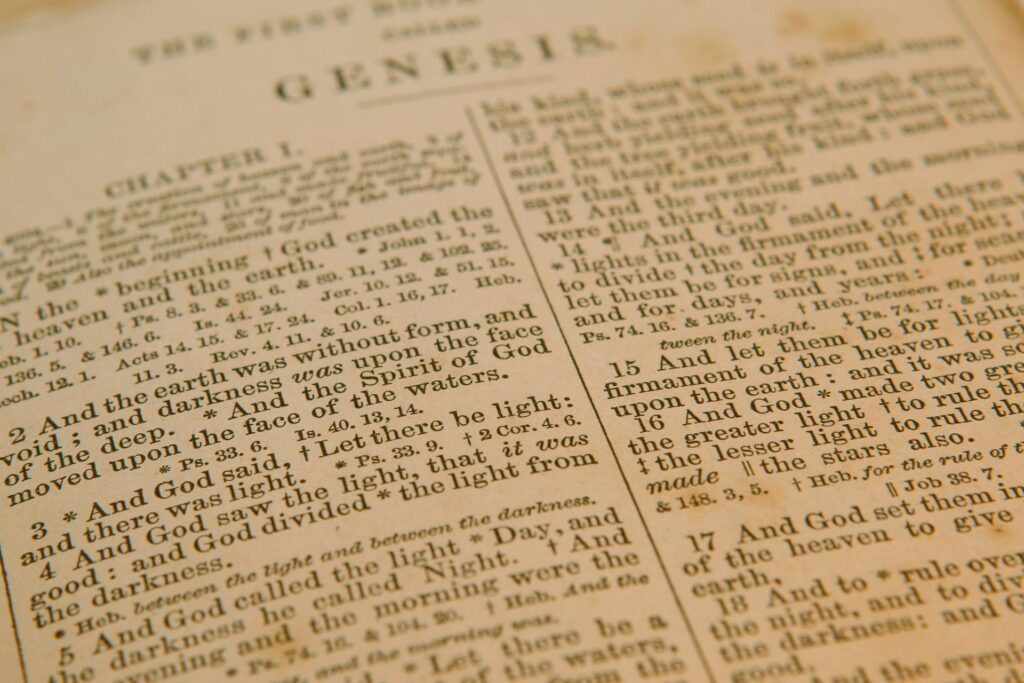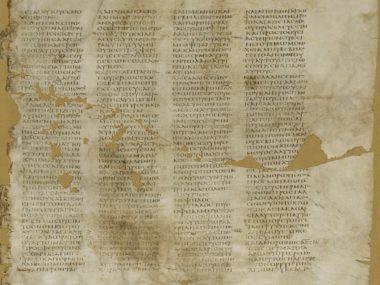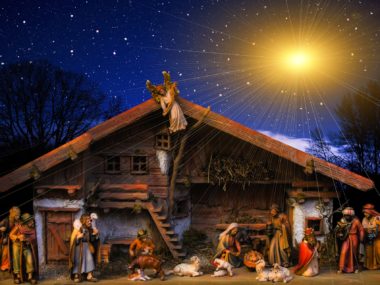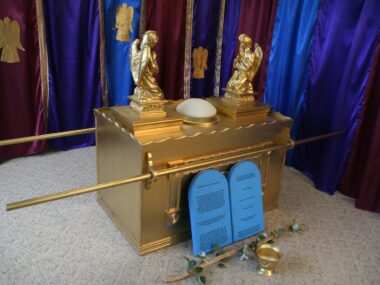David McGee defines young earth creationists as, “a group of theologians, philosophers, and scientists [who] have affirmed that Adam was created by God around 10,000 BC to 4,000 BC.”1 But, why is there such a wide range in these suggested dates?
The following article is a summary of “Creation Date of Adam from the Perspective of Young-Earth Creationism,” by David McGee, and of the surrounding discussion and research pertaining to it. The views expressed do not necessarily reflect those of New Creation.

In his 2012 article, McGee discusses the two prevailing views on the creation date of Adam.2 He points out that a careful analysis of Genesis 1–11 reveals that the biblical date for the creation of the earth is somewhere between 12,000 and 6,000 years ago.3 Since these chapters place the creation of Adam only six days after the creation of the earth, the biblical date for when God created Adam falls within this same date range.
The majority of young earth creationists seem to favor a date closer to 6,000 years ago for the creation of Adam.4,5,6 This view, known as the chronogenealogical perspective, finds its basis in the idea that the genealogies in Genesis 5 and 11 describe actual historical figures and form an unbroken genealogy from Adam to Abraham.7
In a nutshell, this perspective argues that these genealogies tell us the number of years that occurred between each patriarch mentioned in the genealogy. For example, Adam was 130 years old when he fathered Seth. And Seth was 105 years old when he fathered Enosh.

However, a few young earth creationists suggest that there are possible genealogical gaps in Genesis 5 and 11. This could instead place the creation of Adam as early as 10,000–12,000 years ago.8,9 This view, known as the non-chronogenealogical perspective, suggests that Genesis 5 and 11 record the names of actual historical figures, but that they may not include a comprehensive list of each generation.
The Chronogenealogical Perspective
McGee provides the following timeline for the chronogenealogical perspective:
- From the beginning of creation to Day 6 of creation week: Six 24-hour days
- From Day 6 of creation until Noah entered the ark: 1,656 years
- From the day Noah entered the ark until the birth of Abraham: 352 years
- From the birth of Abraham to the birth of Jesus: 1,992 years
- From the birth of Jesus until 2012 (the year McGee’s article was published): 2,017 years
- Total years: 6,017
The portion of the timeline that is the most highly debatable is the time before the birth of Abraham. Those who hold the chronogenealogical perspective believe that approximately 2000 years separate the birth of Abraham from the creation event. The chart below presents the time spans that produce this figure.
In this scenario, there is quite a bit of overlap between the generations. For example, Adam’s lifespan overlaps with all the following generations up to Lamech. This would allow later generations to hear about God firsthand from Adam. There is a similar overlap spanning the years between Noah and Abraham, with Noah living almost until the birth of Abraham. Because of these overlaps, when Moses wrote Genesis, he could have received the story of creation eighth or ninth hand, despite the spanning millennia.
McGee notes two other factors pertaining to the chronogenealogical perspective. The first one appears in Jude 1:14, which states that Enoch was the seventh generation from Adam. This seems to support the chronogenealogical perspective, suggesting that the genealogy is unbroken as described above.
The other factor is the inclusion of Cainan in Luke 3:36. This passage inserts Cainan in between Arphaxad and Shelah. Those of the non-chronogenealogical perspective would use this as evidence that the genealogies in Genesis are incomplete. However, those who hold to the chronogenealogical perspective prefer the idea that the entry in Luke is a scribal error. The name does not appear in the Genesis genealogies in the Masoretic text or the earliest versions of the Septuagint. Furthermore, neither Josephus nor Julius Africanus, both early historians, include Cainan in their genealogies.10,11 Cainan does appear in most copies of the Septuagint, so his inclusion in Luke 3:36 could be an attempt to match that genealogy with that of Genesis in the Septuagint.
In summary, those who hold to the chronogenealogical perspective find it easy to calculate the age of Adam. They view the chronologies in Genesis 5 and 11 as literal and complete. Thus, they are able to add up the dates in the genealogies with later known historical dates and arrive at a concrete date for the creation of Adam. Jude 1:14 supports this view, while Luke 3:36 could include an attempt at a scribal update to the text.
The Non-Chronogenealogical Perspective
Those who hold to the non-chronogenealogical perspective find a quite different date for when God created Adam. McGee lists the six timeframes for this perspective as follows.
- From the beginning of creation to Day 6 of creation week: Six 24-hour days
- From Day 6 of creation until Noah entered the ark: 1,656 years (but possibly more)
- From the day Noah entered the ark until the birth of Abraham: 352 years (but possibly up to 5,000 years)
- From the birth of Abraham to the birth of Jesus: 2,162 years
- From the birth of Jesus until 2012 (the year McGee’s article was published): 2,017 years
- Total years: 10,000–12,000 years
There are many similarities between the chronogenealogical perspective and the non-chronogenealogical perspective. However, those who hold to the non-chronogenealogical perspective believe that allowing for gaps in the Genesis chronologies does not violate the proper interpretation of the passages. In fact, they believe that there is a strong possibility that this is the proper way to interpret the Genesis genealogies, especially Genesis 11.12, 13
McGee presents several arguments used to support the non-chronogenealogial perspective. The first is that there are examples of other genealogies that have gaps in them. For example, Matthew 1:8, 1 Chronicles 16:24, and Exodus 6:40 all appear to skip generations. If these genealogies contain gaps, it is reasonable to think that perhaps the Genesis 5 and 11 genealogies do also.
This is a possibility. The Hebrew words typically translated as “begat” and “son” in these genealogies may not refer strictly to father/son relationships. They may also apply to ancestor/descendant relationships. If this is the case, then these terms could allow for gaps in the genealogies.
As mentioned above, the genealogy in Luke 3:36 includes Cainan in the list of names. However, Cainan is missing in the Masoretic text version of the genealogy in Genesis 11. If Cainan was indeed one of the patriarchs yet is missing from the genealogy, this would also provide evidence of genealogy gaps.
The question is, was Cainan originally included in the genealogy, or not? McGee analyzes a variety of ancient biblical texts and concludes that although it is possible that Genesis 11 originally included Cainan, it is more likely that it did not. He believes that the inclusion of Cainan in Luke 3:36 is likely due to a scribal error.
According to the non-chronogenealogical perspective, however, Cainan appears in the original versions of both Luke and Genesis. This creates symmetry between the genealogies of Genesis 5 and Genesis 11. Each list contains ten generations and the last patriarch in each list having three sons. This, they believe, is a literary device to aid in the memorization of the genealogies. Thus, the genealogies are arranged literarily rather than historically. This allows for the possibility of skipped generations.
In Genesis 10:25, there is a dramatic shortening in lifespans. This coincides with a division of the earth in Peleg’s time. McGee cites an argument by H.M. Morris that the drop in lifespans seems quite abrupt. Morris finds it more likely that there are intermediary generations not listed, and that the drop in lifespans was much more gradual than it appears in Genesis 11.14
Chronogenealogical Versus Non-Chronogenealogical
McGee notes that there are similarities between the chronogenealogical and the non-chronogenealogical perspectives. These include a grammatico-historical hermeneutic (taking the historical context into account when interpreting the scriptures). Both perspectives define the Genesis chronologies as narrative genre, and both believe that the earth is relatively young. Both affirm a Creation Week of six literal, 24-hour days, and both accept that there was a literal world-wide Flood in the days of Noah. They only differ in the question of the genealogies of Genesis 5 and 11 and whether these genealogies could contain gaps.
McGee considers the strengths and weaknesses of each perspective, and concludes that neither viewpoint provides a completely satisfactory explanation for the length of time between Adam and Abraham. He believes that each perspective has some strong arguments and some arguments that are problematic.
The truth, in McGee’s opinion, lies somewhere in between the two perspectives. He finds it hard to allow for gaps within the genealogies without breaking the basic rules of biblical interpretation, at least in Genesis 5. At the same time, he sees difficulties with the short timeframe allowed by the chronogenealogical perspective. Because of this, he is not totally closed to the possibility of gaps, especially in Genesis 11.
McGee closes the article with the following caution to his readers: “May you draw a conclusion of which interpretation you espouse and then realize that your differences with the other viewpoint should not cause division but rather a healthy–gracious respect for where you disagree.”
Footnotes
- McGee, D. 2012. “Creation Date of Adam from the Perspective of Young-Earth Creationism.” Answers Research Journal 5:217–230. ↩︎
- McGee, 2012, 217–230. (Footnote 1) ↩︎
- Stallard, M. 2000. “Literal Interpretation: The Key to Understanding the Bible.” The Journal of Ministry and Theology 4, no. 1: 14–35. ↩︎
- Stallard, 2000, 14–35. (Footnote 3) ↩︎
- Freedman, R. 2008. “Do the Genesis Genealogies Contain Gaps?” In Coming to Grips with Genesis: Biblical Authority and the Age of the Earth, edited by T. Mortenson and T.H. Ury, pp. 283–314. Green Forest, Arkansas: Master Books. ↩︎
- Wise, K. 2002. Faith, Form, and Time: What the Bible Teaches and Science Confirms about Creation and the Age of the Universe. Nashville, Tennessee: B&H Books. ↩︎
- Freedman, 2008, 283–314. (Footnote 5) ↩︎
- Morris, H.M. 1976. The Genesis Record: A Scientific and Developmental Commentary on the Book of Beginnings. Grand Rapids, Michigan: Baker Books. ↩︎
- Whitcomb, J.C. and H.M. Morris. 1961. The Genesis Flood: The Biblical Record and Its Scientific Implications. Grand Rapids, Michigan: Baker Publishing Group ↩︎
- Chaffey, T. and J. Lisle. 2008. Old Earth Creationism on Trial: The Verdict is in. Green Forest, Arkansas: New Leaf Publishing. ↩︎
- Sarfati, J. 2004. “What about Cainan?” TJ 18, no. 2: 41–43. ↩︎
- Morris, H.M. 1976. The Genesis Record: A Scientific and Developmental Commentary on the Book of Beginnings. Grand Rapids, Michigan: Baker Books. ↩︎
- Whitcomb, 1986. (Footnote 9) ↩︎
- Morris, 1976. (Footnote 12) ↩︎












When Henry Morris was alive, the non-chronogenealogical perspective was the majority view. Dr. Morris was even open to the idea that creation week was a little further back than 10,000 B.C. The change seems to have started early in the 21st century when Answers in Genesis began to promote “chronogenealogies.”
Mizraim, meaning, as Abigail will know, the Two Egypts, a son of Ham. Is this not clear evidence that the genealogies refer to groups, rather than individuals?
Hi Paul, yes, you are correct that Mizraim is one of the sons of Ham, and that it is a reference, in the dual form, to Egypt (Upper and Lower Egypt). I think that one could use this as an argument in favor of the idea that Mizraim in the genealogy refers to a people group rather than an individual. However, I think that it would be difficult to prove this conclusively. Further, even if you could prove that Mizraim refers to a group rather than an individual, I think that it would be a stretch of logic to apply this to the entire genealogy.
One question not answered in the blog above is How long were Adam and Eve in the Garden of Eden? In Genesis, I am aware of nothing that says it was a short time. It may have been decades or centuries before Satan finally wore down Eve and got her to eat the fruit. Or, Eve may have just become impatient about the “multiply and replenish the Earth” commandment.
Hi Richard, while Genesis does not specify how long Adam and Eve were in the Garden of Eden, it does state that Seth was born when Adam was 130 years old. By this point, Adam and Eve were no longer in Eden, and Cain and Abel had already been born (also after Adam and Eve left the Garden of Eden). So, this limits the time in Eden to a certain extent. Adam and Eve were there for less than 130 years. Beyond that, we don’t really know how long they were there. They could have spent a few weeks or over a hundred years in Eden before being exiled.